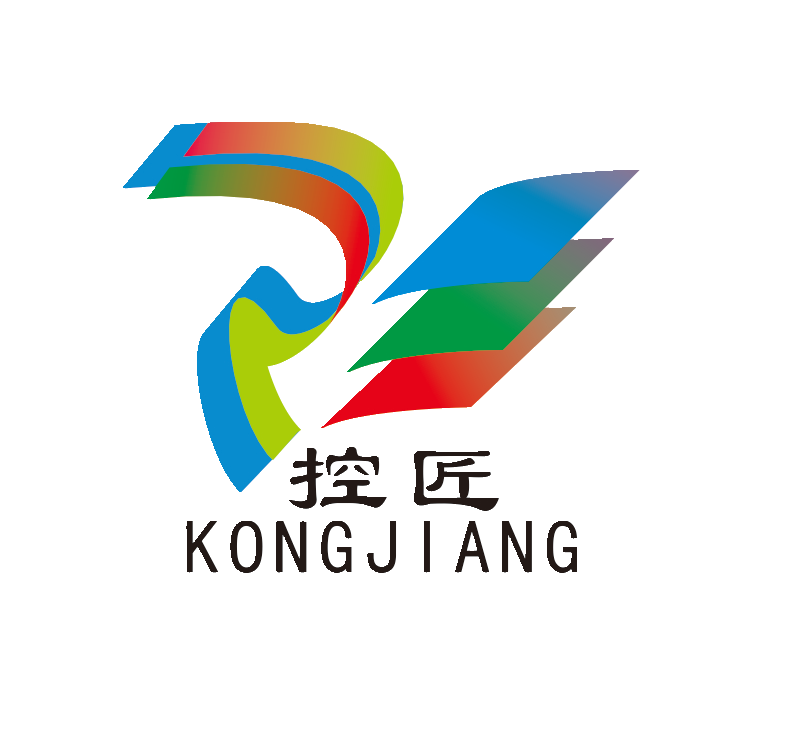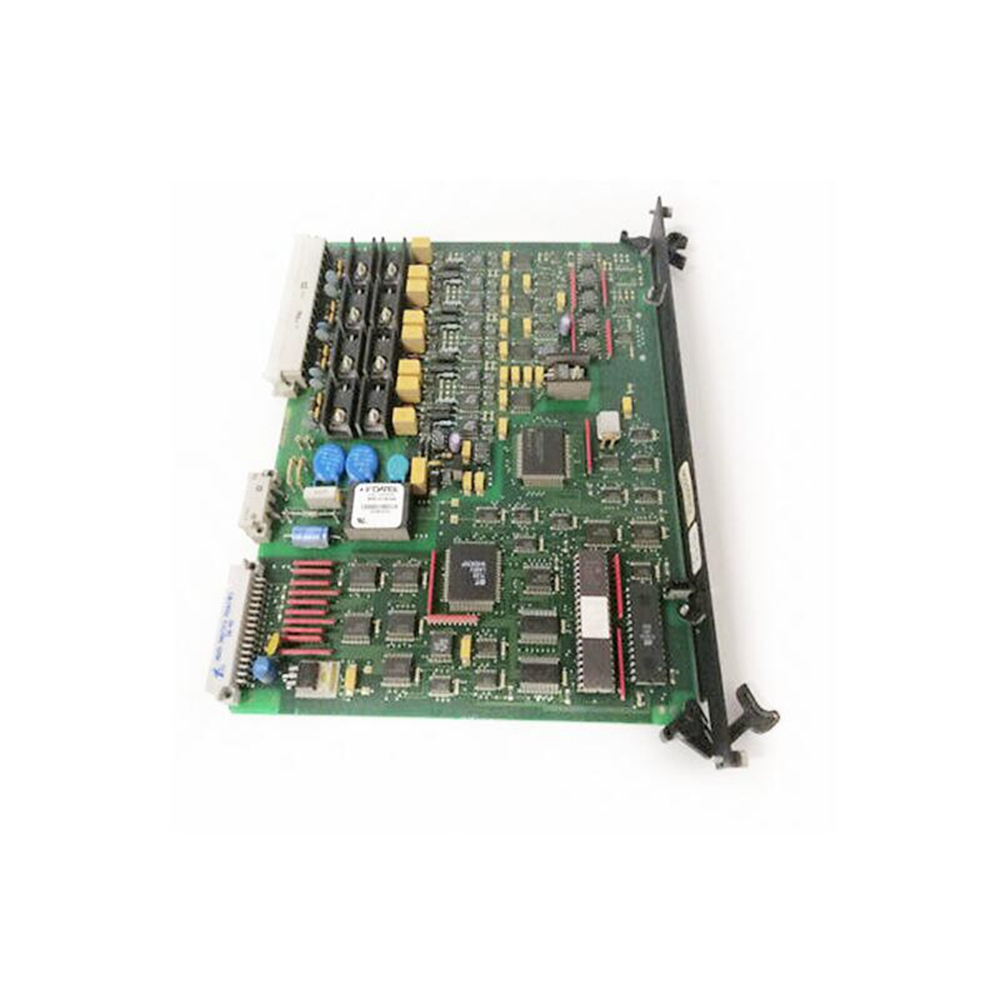

K-WANG


Alstom AL132 control board module card
Alstom AL132 control board module card
Product Overview
Alstom AL132 control board module card is a professional control board module card launched by Alstom, mainly serving key links in industrial automation control and power systems. It is designed with high integration and high reliability as its core concept, integrating various functions such as data acquisition, signal processing, logical operation, and equipment control into one. In industrial production scenarios, whether it is complex production line automation control or stable operation monitoring of power equipment, AL132 can provide solid guarantees for the efficient operation of the system with its excellent performance, and is an indispensable core component for achieving industrial intelligence and automation.
Specification parameters
Input and output channels: With rich input and output interfaces, including multiple analog input channels, it can accurately collect analog signals such as voltage, current, temperature, pressure, etc., with a sampling accuracy of ± 0.2%; The number of digital input and output channels is sufficient, supporting standard level signals, able to quickly respond to external device status changes, and achieve precise control command output. In addition, it is equipped with dedicated communication interfaces such as RS-485 and Ethernet interfaces to meet the data exchange and networking requirements with different devices and systems.
Working voltage: Supports wide voltage input of 18-36V DC, with built-in high-efficiency voltage regulator circuit, capable of stable operation in industrial sites with large voltage fluctuations, ensuring the stability and reliability of module card operation.
Working temperature: The working temperature range is -40 ℃ to 85 ℃, suitable for harsh industrial environments such as severe cold and high temperature. Whether it is outdoor power facilities or high-temperature industrial plants, stable performance can be guaranteed.
Data processing capability: Equipped with high-performance processors, it has powerful data processing and computing capabilities, with a data processing speed of over 80000 times per second. It can filter, analyze, convert and process collected data in real time, providing timely and accurate data support for system control.
Size specifications: Adopting a compact card design, the size is approximately [specific length x width x height dimensions], occupying small space and making it easy to install inside various control cabinets or devices with limited space.
Core functions
Data collection and preprocessing: It can collect various signals in the industrial production process in real time, and perform preprocessing operations such as filtering and denoising, range conversion, and linearization on the collected data, effectively improving data quality and usability. At the same time, deep analysis of data is carried out through built-in algorithms to achieve signal peak detection, trend prediction, and other functions, providing strong basis for system control decisions.
Precise device control: Based on preset control logic and algorithms, precise control of external devices is achieved. In the power system, transformer tap changer and circuit breaker opening and closing can be automatically adjusted according to changes in grid parameters; In industrial automation production lines, it is possible to accurately control the start stop and speed of motors, as well as the execution of robotic arm movements, achieving equipment automation and intelligent operation.
Efficient communication networking: With the help of communication interfaces such as RS-485 and Ethernet, it supports multiple communication protocols such as Modbus RTU, Modbus TCP, Profibus, etc., and can achieve interconnection and intercommunication with devices of different brands, types, and upper computers. Through network communication, the collected data can be uploaded in real time to the monitoring center, and control instructions issued by the monitoring center can be received to achieve remote monitoring and control.
Intelligent fault diagnosis and protection: Equipped with a comprehensive fault diagnosis system, it can monitor its own working status and external device connection in real time. When abnormal situations such as input signal exceeding range, communication interruption, and module card temperature are detected, an alarm signal is immediately issued, and protective measures such as cutting off output and entering safe working mode are automatically taken to prevent the fault from expanding and ensure the safe operation of the system.
Working principle
When the Alstom AL132 control board module card is working, the analog signals output by external sensors or devices are connected to the module card through the analog input channel. The signal is first amplified, filtered, and processed by the signal conditioning circuit, and then converted into digital signals through an analog-to-digital converter (ADC), which is transmitted to the built-in processor. The digital input signal directly enters the processor through the digital input interface. The processor performs logical operations and processes on input data based on programs and algorithms pre stored in internal memory, generating corresponding control instructions. These instructions are converted into analog signals through digital output channels or digital to analog converters (DACs), and then output to external actuators to achieve precise control of the device.
During the communication process, the communication interface module is responsible for transmitting and receiving data with external devices. When receiving data, decode and verify the signal before passing it to the processor; When sending data, encode and package the data processed by the processor, and send it out through a communication interface. At the same time, the clock circuit and power management circuit inside the module card provide stable clock signals and power supply for the entire system, ensuring that all functional modules work together normally.
Key advantages
High precision and high reliability: Advanced sensor technology and high-precision A/D and D/A converters are used to ensure high precision in data acquisition and control. High quality electronic components are selected and rigorously tested to demonstrate excellent resistance to electromagnetic interference and environmental adaptability. They can operate stably even in complex electromagnetic environments and harsh weather conditions, significantly reducing equipment failure rates and maintenance costs.
Flexible scalability: Rich input and output interfaces and support for multiple communication protocols enable it to flexibly adapt to different industrial equipment and system requirements. Users can easily achieve functional expansion and system upgrades by adding expansion modules or adjusting software configurations according to actual application scenarios, meeting the changing needs of enterprise production development.
Efficient processing performance: The combination of high-performance processors and optimized data processing algorithms ensures that module cards can quickly and accurately process large amounts of data, respond to external signal changes in a timely manner, make control decisions quickly, and significantly improve system operating efficiency and production efficiency.
Convenient installation and maintenance: Compact design and standardized interfaces make module card installation easy and can be quickly integrated into existing systems. The comprehensive self diagnostic function and clear fault indication facilitate technicians to quickly troubleshoot and repair faults, shorten equipment downtime, and improve production continuity.
Precautions
Installation environment requirements: It should be installed in a dry, well ventilated, non corrosive gas, and non violent vibration environment. Avoid installation in high temperature, humid, and dusty areas to prevent electronic components from being affected by moisture, oxidation, or dust blockage, which can affect performance and lifespan. The installation location should be far away from strong electromagnetic interference sources such as large motors and transformers to reduce the impact of electromagnetic interference.
Power connection specification: Before connecting the power supply, it is necessary to confirm that the input power supply voltage is consistent with the requirements of the module card, and ensure that the power supply polarity is correct. It is recommended to use a stable power supply and install appropriate fuses and filtering devices in the power line to prevent power fluctuations and surges from damaging the module card.
Key points for signal connection: When connecting input and output signal cables, ensure that the cables are firmly connected to avoid virtual connections and short circuits. For analog signals, shielded cables are used and the shielding layer is reliably grounded to reduce external interference. At the same time, pay attention to matching the signal range to prevent the input signal from exceeding the range and damaging the module card.
Software operation specifications: When configuring and programming software, strictly follow the product manual to avoid system failures or data loss caused by improper operation. Regularly backup module card software for quick system recovery in case of failure. Before upgrading software versions, conduct testing to ensure compatibility between the new version of software and hardware.
Similar model supplement
Alstom AL133 control board module card: Same series as AL132, similar in basic functions and interface layout, but AL133 has significant improvements in data processing speed, with data processing speed 40% faster than AL132, and supports more communication protocols, suitable for complex industrial control systems with higher requirements for data processing speed and communication compatibility.
Alstom AL131 control board module card: focuses on digital signal processing, with a 50% increase in the number of digital input and output channels compared to AL132. It has more powerful logic operation functions and is suitable for industrial scenarios mainly based on digital signal control, such as logic control of automated production lines and monitoring and control of power system switch values. However, its analog signal processing capability is relatively weak.

- YOKOGAWA
- Energy Access
- Renewable Integration
- Energy Subsidies
- Energy and Water
- Net zero emission
- Energy Security
- Critical Minerals
- A-B
- petroleum
- Mine scale
- Energy and Gender
- Covid-19
- man-machine
- Reliance
- ADVANCED
- SEW
- ProSoft
- WATLOW
- Kongsberg
- FANUC
- VSD
- DCS
- PLC
- Sewage treatment
- cement
- Yaskawa
- Woodward
- BOSCH Rexroth
- MOOG
- General Electric
- American NI
- Rolls-Royce
- CTI
- Honeywell
- EMERSON
- Automobile market
- xYCOM
- Motorola
- architecture
- Industrial information
- New energy
- electricity
- Construction site
- HIMA
- ABB
- Rockwell
- Schneider Modicon
- Siemens
- MAN
- GE
- TRICONEX
- Control Wave
- ALSTOM
- AMAT
- STUDER
- KONGSBERG
- MOTOROLA
- DANAHER MOTION
- Bentley
- Galil
- EATON
- MOLEX
- Triconex
- DEIF
- B&W
- ZYGO
- Aerotech
- DANFOSS
- KOLLMORGEN
- Beijer
- Endress+Hauser
- schneider
- Foxboro
- KB
- REXROTH
- YAMAHA
- Johnson
- Westinghouse
- WAGO
- TOSHIBA
- TEKTRONIX
-
Kollmorgen S33GNNA-RNNM-00 - Brushless Servo Motor
-
Kollmorgen 6sm56-s3000-g-s3-1325 - Servo Motor
-
Kollmorgen AKM52K-CCCN2-00 - Servo Motor
-
Kollmorgen PSR3-230/75-21-202 - Power Supply
-
Kollmorgen akm24d-anc2r-00 - Servo Motor
-
Kollmorgen AKM22E-ANCNR-00 - Servo Motor
-
Kollmorgen S60300-550 - Servo Drive
-
Kollmorgen B-204-B-21 - Servomotor
-
Kollmorgen AKM21E-BNBN1-00 - Servo Motor
-
Kollmorgen TT2953-1010-B - DC Servo Motor
-
Kollmorgen pa8500 - Servo Power Supply
-
Kollmorgen BDS4A-210J-0001-207C2 - Servo Drive
-
Kollmorgen TTRB1-4234-3064-AA - DC Servo Motor
-
Kollmorgen MH-827-A-43 - Servo Motor
-
Kollmorgen AKM24D-ACBNR-OO - Servo Motor
-
Kollmorgen 00-01207-002 - Servo Disk DC Motor
-
Kollmorgen AKM21C-ANBNAB-00 - Servo Motor
-
Kollmorgen PSR3-208/50-01-003 - Power Supply
-
Kollmorgen 6SM56-S3000 - Servo Motor
-
Kollmorgen DBL3H00130-B3M-000-S40 - Servo Motor
-
Kollmorgen 6SN37L-4000 - Servo Motor
-
Kollmorgen AKM65K-ACCNR-00 - Servo motor
-
Kollmorgen 6SM56-L3000-G - Servo Motor
-
Kollmorgen AKMH43H-CCCNRE5K - Servo Motor
-
Kollmorgen PSR4/52858300 - Power Supply
-
Kollmorgen KBM-79H03-E03 - Direct Drive Rotary Motor
-
Kollmorgen AKM33E-ANCNDA00 - Servo Motor
-
Kollmorgen U9M4/9FA4T/M23 - ServoDisc DC Motor
-
Kollmorgen AKM13C-ANCNR-00 - Servo Motor
-
Kollmorgen AKM43L-ACD2CA00 - Servo Motor
-
Kollmorgen AKM54K-CCCN2-00 - Servo Motor
-
Kollmorgen M-605-B-B1-B3 - Servo Motor
-
Kollmorgen AKD-P00606-NBAN-0000 - Rotary Drive
-
Kollmorgen 6SM-37M-6.000 - Servo Motor
-
Kollmorgen A.F.031.5 - Sercos Interface Board
-
Kollmorgen 918974 5054 - Servo PWM
-
Kollmorgen U12M4 - ServoDisc DC Motor
-
Kollmorgen AKD-B00606-NBAN-0000 - Servo Drive
-
Kollmorgen MV65WKS-CE310/22PB - Servo Drive
-
Kollmorgen 65WKS-CE310/22PB - Servo Drive
-
Kollmorgen EM10-27 - Module
-
Kollmorgen S64001 - Servo Drive
-
Kollmorgen CR03200-000000 - Servo Drive
-
Kollmorgen 6SM57M-3000+G - Servo Motor
-
Kollmorgen BDS4 - Servo Drive
-
Kollmorgen AKD-P00306-NBEC-000 - Servo Drive
-
Kollmorgen AKD-B01206-NBAN-0000 - Servo Drive
-
Kollmorgen STP-57D301 - Stepper Motor
-
Kollmorgen 6SM37L-4.000 - Servo Motor
-
Kollmorgen 44-10193-001 - Circuit Board
-
Kollmorgen PRDR9SP24SHA-12 - Board
-
Kollmorgen PRD-AMPE25EA-00 - Servo Drive
-
Kollmorgen DBL3N00130-0R2-000-S40 - Servo Motor
-
Kollmorgen S406BA-SE - Servo Drive
-
Kollmorgen AKD-P00607-NBEI-0000 - Servo Drive
-
Kollmorgen AKD-P01207-NBEC-0000 - Servo Drive
-
Kollmorgen CR03550 - Servo Drive
-
Kollmorgen VSA24-0012/1804J-20-042E - Servo Drive
-
Kollmorgen N2-AKM23D-B2C-10L-5B-4-MF1-FT1E-C0 - Actuator
-
Kollmorgen 04S-M60/12-PB - Servo Drive
-
Kollmorgen H33NLHP-LNW-NS50 - Stepper Motor
-
Kollmorgen A-78771 - Interlock Board
-
Kollmorgen AKM43E-SSSSS-06 - Servo Motor
-
Kollmorgen AKD-P00607-NBEC-0000 - Servo Drive
-
Kollmorgen E21NCHT-LNN-NS-00 - Stepper Motor
-
Kollmorgen cr10704 - Servo Drive
-
Kollmorgen d101a-93-1215-001 - Motor
-
Kollmorgen BDS4A-203J-0001-EB202B21P - Servo Drive
-
Kollmorgen MCSS23-6432-002 - Connector
-
Kollmorgen AKD-P01207-NACC-D065 - Servo Drive
-
Kollmorgen CK-S200-IP-AC-TB - I/O Adapter and Connector
-
Kollmorgen CR10260 - Servo Drive
-
Kollmorgen EC3-AKM42G-C2R-70-04A-200-MP2-FC2-C0 - Actuator
-
Kollmorgen BDS5A-206-01010-205B2-030 - Servo Drive
-
Kollmorgen s2350-vts - Servo Drive
-
Kollmorgen AKM24D-ANC2DB-00 - Servo Motor
-
Kollmorgen E31NCHT-LNN-NS-01 - Stepper Motor
-
Kollmorgen PRD-0051AMPF-Y0 - Servo Board
-
Kollmorgen TB03500 - Module
-
Kollmorgen 60WKS-M240/06-PB - Servo Drive
-
Kollmorgen M21NRXC-LNN-NS-00 - Stepper Motor
-
Kollmorgen H-344H-0212 - Servo Motor
-
Kollmorgen MCSS08-3232-001 - Connector
-
Kollmorgen AKM33H-ANCNC-00 - Servo Motor
-
Kollmorgen PA-2800 - Power Supply
-
Kollmorgen MTC308C1-R1C1 - Servo Motor
-
Kollmorgen PRDR0091300Z-00 - Capacitor Board
-
Kollmorgen BDS4A-206J-0024/01502D79 - Servo Drive
-
Kollmorgen S20330-VTS - Servo Drive
-
Kollmorgen S20250-CNS - Servo Drive
-
Kollmorgen SBD2-20-1105-WO - Servo Drive Board
-
Kollmorgen M405-C-A1--E1 - Servo Motor
-
Kollmorgen PRD-PB805EDD-00 - Servo Drive
-
Kollmorgen 6SM57S-3.000-J-09-HA-IN - Servo Motor
-
Kollmorgen AKM33H-ANCNDA-00 - Servo Motor
-
Kollmorgen PCB-00030200-04 - PCB
-
Kollmorgen H22SSLB-LNN-NS-02 - Stepper Motor
-
Kollmorgen BJRL-20012-110001 - Module
-
Kollmorgen BDS4A-206J-0001404A - Servo Drive
-
Kollmorgen H-342-H-0802 - Servo Motor
-
Kollmorgen CR10561 - Servo Drive
-
Kollmorgen BDS5A-206-00010-205B2-030 - Servo Drive
-
Kollmorgen BDS5A-206-00010-207B-2-030 - Servo Drive
-
Kollmorgen mcss08-3224-001 - Connector
-
Kollmorgen M-207-B-23-B3 - Servo Motor
-
Kollmorgen PRD-0041200Z-S0 - Encoder/Resolver Card
-
Kollmorgen MH-225-G-61 - Motor
-
Kollmorgen MT308B1-T1C1 - Servo Motor
-
Kollmorgen BDS4A-240J-0001604C83 - Servo Drive
-
Kollmorgen 6SM57-S-3000 - Servo Motor
-
Kollmorgen N-T31V-15-5B-6-MF3-FT1E-C251 - Actuator
-
Kollmorgen PRD-0051AMPA-X0 - Servo Board
-
Kollmorgen CF-SS-RHGE-09 - Cable
-
Kollmorgen DIGIFAS7204 - Servo Drive
-
Kollmorgen S30101-NA - Servo Drive
-
Kollmorgen DIGIFAS7201 - Servo Drive
-
Kollmorgen PRD-0051AMPA-Y0 - Servo Board
-
Kollmorgen AKM23D-EFCNC-00 - Servo Motor
-
Kollmorgen SE10000 - Servo Drive
-
Kollmorgen PSR4/5A-112-0400 - Power Supply
-
Kollmorgen AKM31H-ANCNC-01 - Servo Motor
-
Kollmorgen M-203-B-93-027 - Servo Motor
-
Kollmorgen CP-SS-G1HE-05 - Connector
-
Kollmorgen AKM42G-ASCNR-02 - Servo Motor
-
Kollmorgen DBL4N00750-B3M-000-S40 - Servo Motor
-
Kollmorgen R3-BK23-152B-12-PL-ASE-BS115 - Actuator
-
Kollmorgen MH-427-B-61 - Motor
-
Kollmorgen cr06902 - Servo Drive




